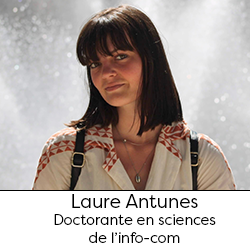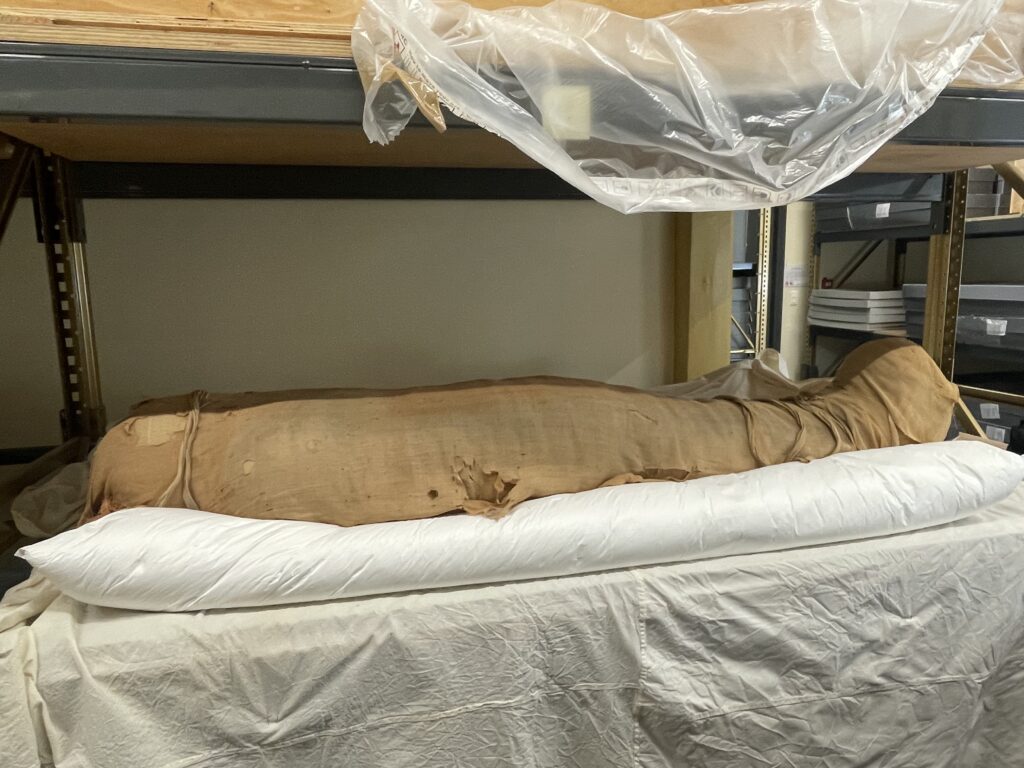[Portrait] Laure Antunes, Doctoral student in information and communication sciences (CNE & Agorantic)
What is your research about?
Using a dual approach in information and communication sciences and law, I am writing a thesis on the subject of the exhibition of Egyptian mummies at the museum and questions the tensions that crystallize between legal standards and ethical principles. At the heart of these tensions are the responsibilities and practices of museum professionals with regard to human remains, and their status as heritage objects. From now on, we need to question what we are allowed to do, say and show about these sensitive subjects when we have a moral duty to respect human dignity. The aim of my research is to study how to reconcile museological and ethical issues in the exhibition of Egyptian mummies, and to analyse the extent to which new presentation techniques (scenographic staging techniques and digital mediation) are able to offer compromise solutions to this problem.

What are your current scientific activities?
At the same time as writing this thesis, I co-curated the exhibition "Curious mummies. From Champollion to the Synchrotron". (28 March - 23 November 2025) at the Musée Champollion in the Département of Isère. I collaborated on the publication of its exhibition catalogue, in which I present an article entitled "Exposing Egyptian mummies: a new relationship to the body and the sacred", and I will shortly be giving a talk at the museum on this theme. An article, written in collaboration with Isabelle Brianso and Éric Triquet (respectively MC and PU, Avignon University), has just been published in Les Carnets de l'Ocim under the title "Exhibiting human remains: a risk taken by the exhibition curator?.
Why did you choose to work in academic research?
My master's thesis on the ethical display of Egyptian mummies was an obvious choice. At the end of it, I was certain that I wanted to continue on my research path, and above all, to continue working on this subject that has fascinated me for more than four years now. What motivates me in my research is to confront a topical and controversial issue, and to bring to it a reflection likely to shed light on, or even support, the practices of museum professionals.
What advice would you give to students who want to do research?
Be passionate! In my opinion, passion is one of the essential driving forces behind research. It inspires us, fuels our curiosity, guides us in this sometimes complex adventure, dispels our doubts and pushes us to persevere. Without it, research would lose some of its pleasure. Doing research also means facing moments of solitude and an emotional rollercoaster, in the face of which we must never lose sight of our objectives or our determination.
What object or image from your business best illustrates you?
May 2022, reserves of the Museum of Mediterranean Archaeology in Marseille. I had an encounter that was to leave a lasting impression on me, both professionally and personally. For the first time, I was confronted with an Egyptian mummy, with no display case or barrier to keep it away from me. It was at that precise moment that I understood the true nature of what I had chosen to study.

The Norbert Elias Centre (UMR 8562)
The Norbert Elias Centre (UMR 8562) brings together researchers from different disciplines who are convinced of the unity of the human and social sciences. The laboratory is located on the EHESS Marseille campus at Vieille Charité and on the Hannah Arendt campus at Avignon University. It brings together 50 researchers, 80 doctoral students and a support team of about ten people who work on the analysis and description of social worlds.
>> Read more
The Agorantic Research Federation
The FR 3621 Agorantic is an interdisciplinary research federation whose two main activities are guardianship are Avignon University and the CNRS. This federation brings together 8 member units and a growing number of associate units working on projects. Its main objective is to study societal issues related to the development of digital technology.
Agorantic aims to mobilise and unite teams of researchers from different disciplinary backgrounds around scientific projects and themes combining Human and Social Sciences (SHS) on the one hand, and Formal and Computational Sciences (SFC) on the other. The aim is for all the partners involved to pool their expertise with a view to fostering the emergence of a centre of excellence in digital humanities.
Research portraits
Updated on 30 October 2025